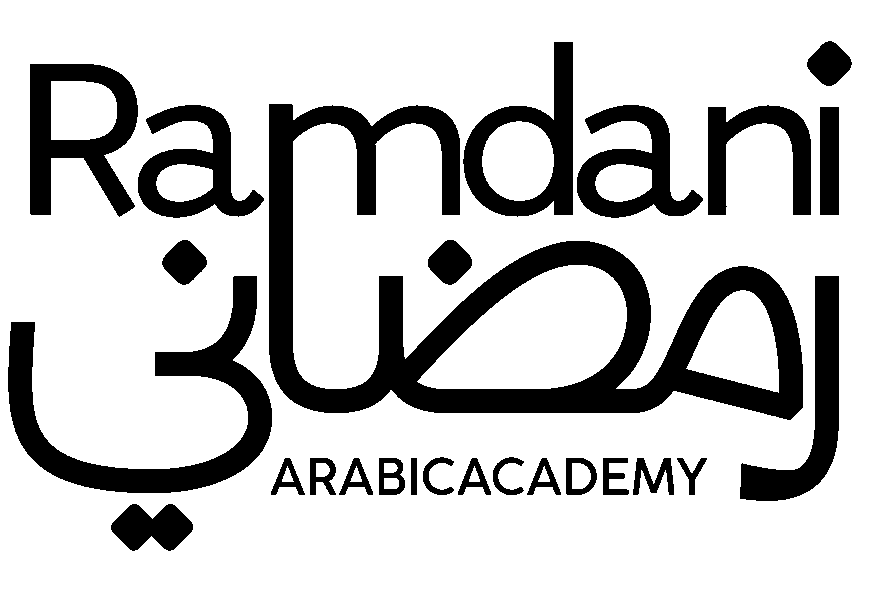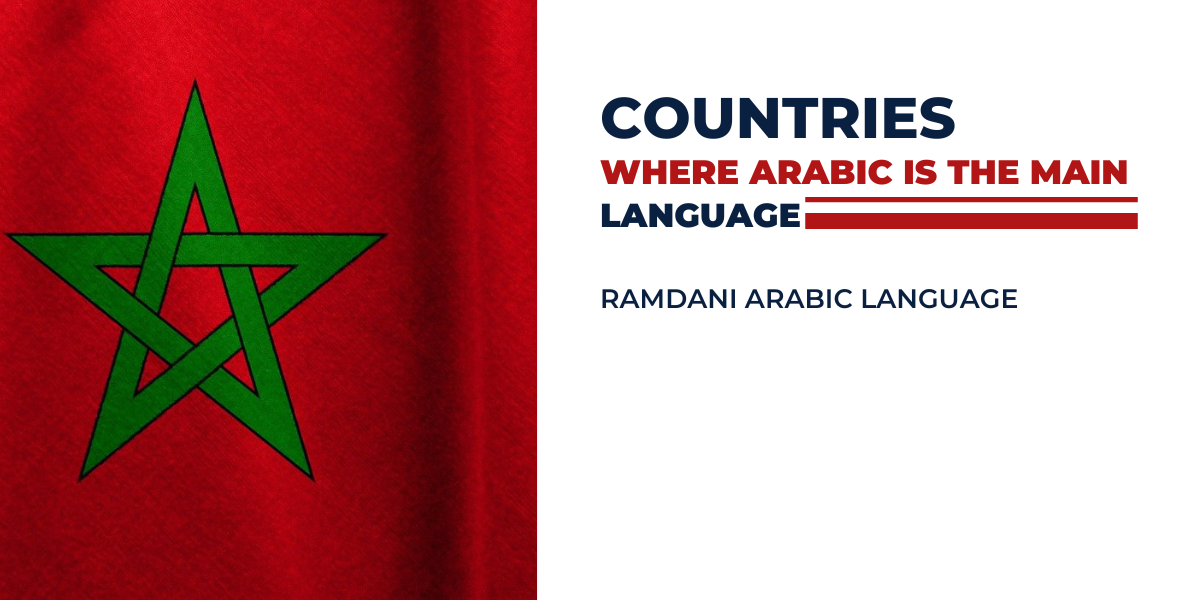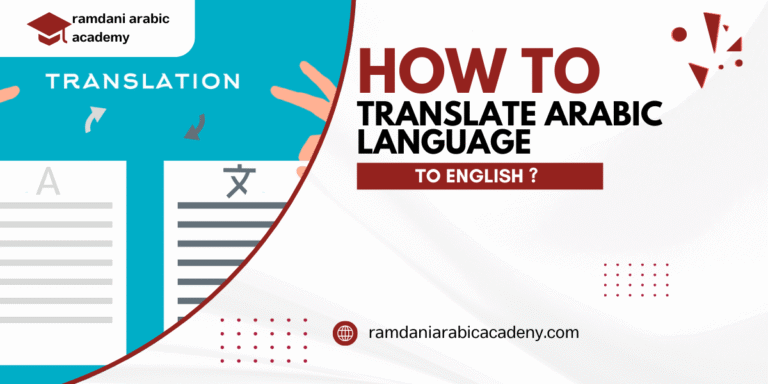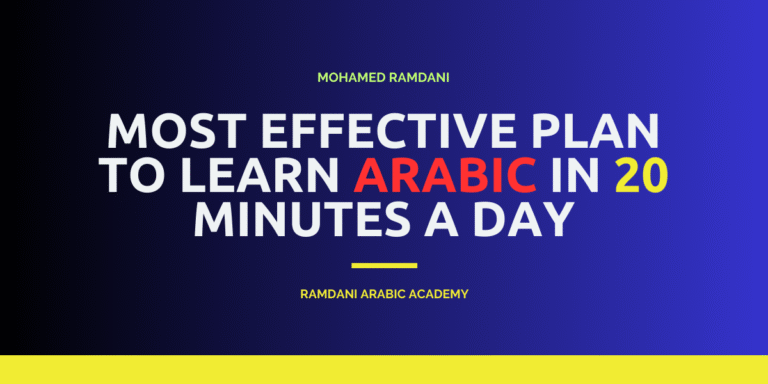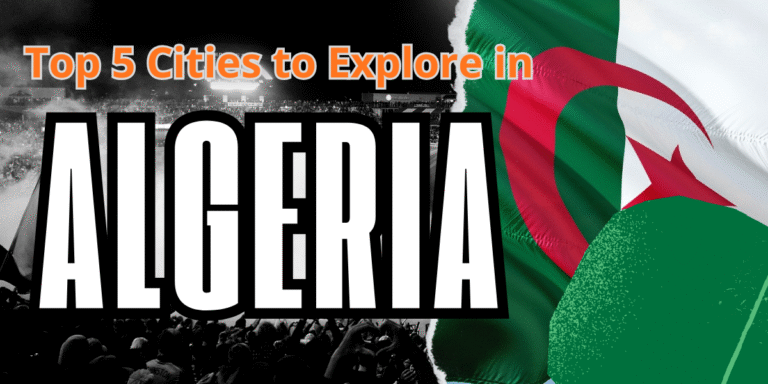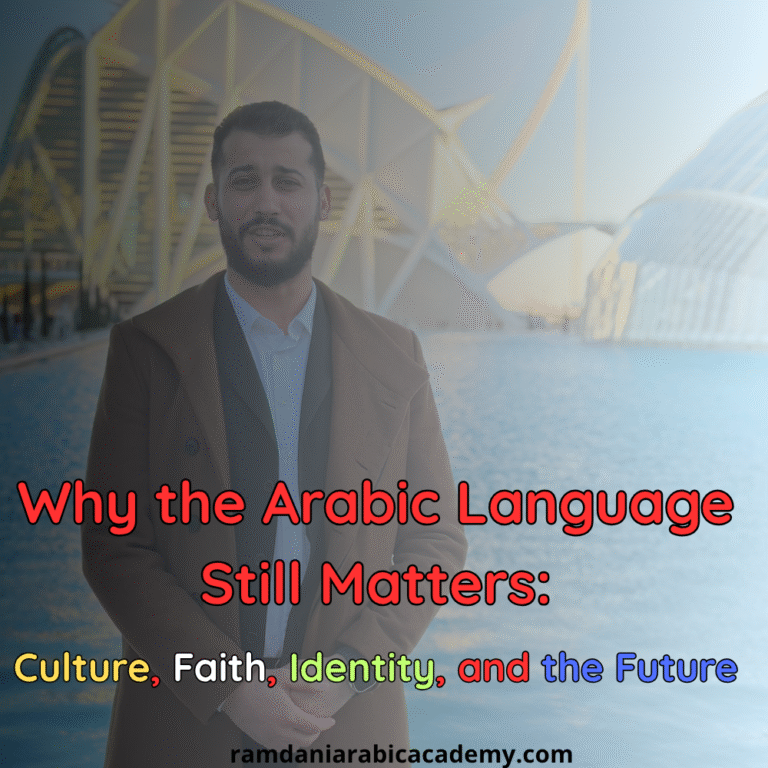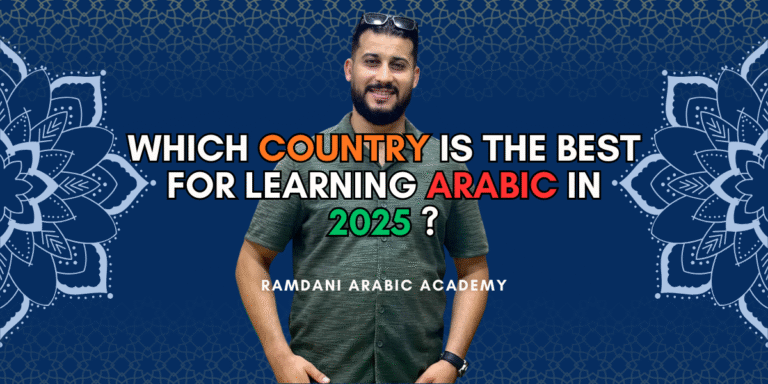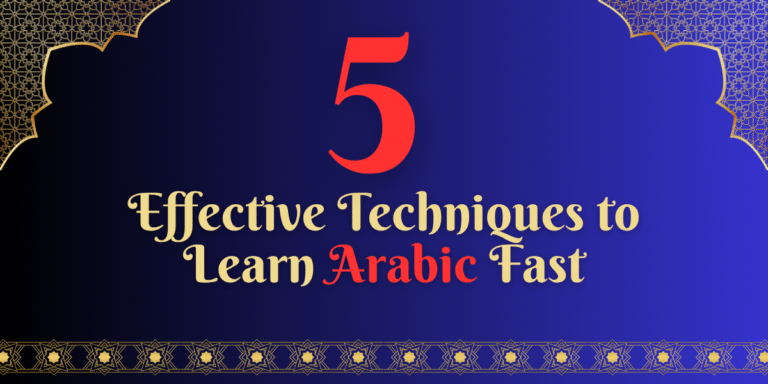Countries where arabic is the main language
Arabic is one of the oldest and most influential languages still spoken today. With over 400 million speakers across the globe, it is not only a means of daily communication but also a key to history, culture, and identity. Arabic carries with it centuries of knowledge, literature, and science, and remains deeply connected to religion and tradition. For anyone who wants to understand the Arab world, learning Arabic is more than a linguistic journey. It is a step toward understanding societies, values, and ways of life that span from North Africa to the Middle East.
Arabic is the official or co-official language in more than 20 countries. These countries stretch across a wide geographic area, from the Atlantic Ocean in the west to the Arabian Gulf in the east. This vast region is often referred to as the Arab world, and though it shares a common language, it is diverse in its cultures, dialects, and histories. Each country adds its own touch to the language, influenced by local traditions, indigenous roots, and historical events.
One of the unique aspects of Arabic is the difference between Modern Standard Arabic and local dialects. Modern Standard Arabic is used in media, education, official documents, and formal settings. Dialects, however, are spoken in daily life. For example, Egyptian Arabic differs greatly from Moroccan Arabic, and both are distinct from Levantine or Gulf Arabic. Yet, despite these differences, the shared foundation of the language allows people across these countries to connect with one another and build a sense of unity.
Arabic’s reach goes beyond the Arab world. It is recognized as one of the six official languages of the United Nations. It also has significant importance in Islam, as the Quran is written in Arabic. This connection has spread the study of Arabic far outside the borders of Arab countries, making it one of the most studied second languages in the world. For many learners, Arabic is not only about communication but also about connecting with faith, history, and culture.
Understanding the countries where Arabic is the main language helps learners appreciate the scope of the language. It shows how Arabic adapts and thrives in different environments, from the deserts of the Arabian Peninsula to the bustling cities of North Africa. It also highlights the role Arabic plays in uniting people who may differ in customs, food, or music, but who find common ground through their shared language.
In this article, we will explore the countries where Arabic is the primary language. We will look at how the language functions in daily life, how it connects with local identity, and how it continues to shape the modern world. We will also provide insights for learners who wish to improve their skills and gain a deeper understanding of Arabic-speaking societies.
Arabic is more than just words. It is history, culture, and community. By learning where and how it is spoken, you take the first step toward seeing the language not as an abstract subject, but as a living force that touches millions of lives every day.
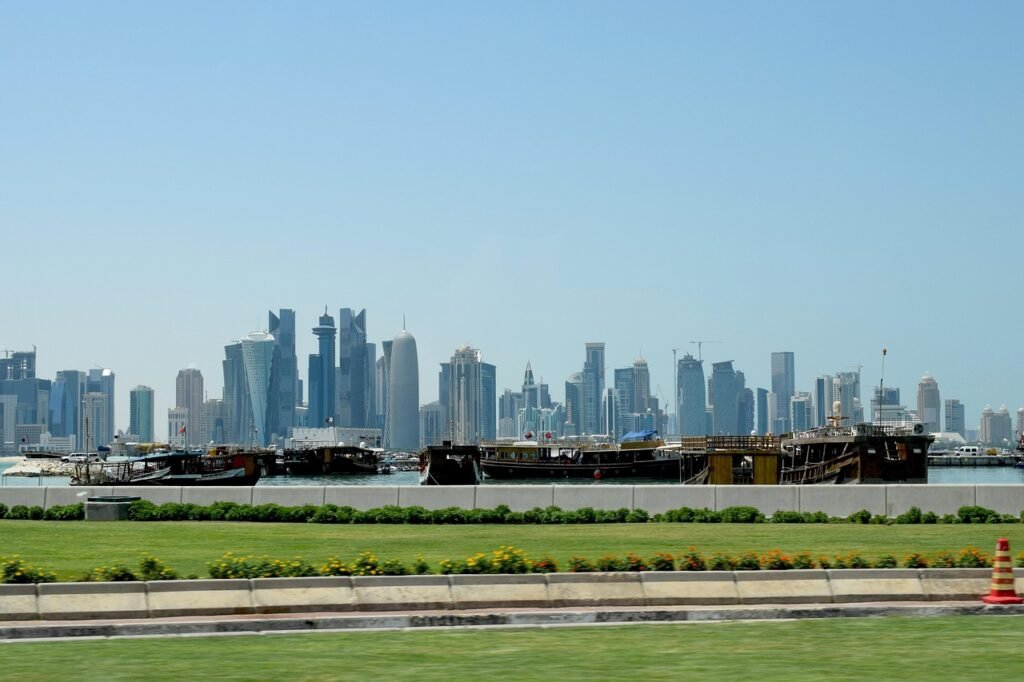
Part 1: Arabic in North Africa
North Africa is one of the strongest pillars of the Arabic-speaking world. The region stretches from the Atlantic Ocean in the west to the borders of Egypt in the east. While every country here has its own unique history and identity, Arabic remains the central language of administration, education, and culture. The roots of Arabic in this region go back more than a thousand years, when it spread through trade, conquest, and religion. Today, Arabic continues to play a leading role in daily life, even though other influences such as French, Berber, or English exist alongside it.
Morocco
Morocco is often described as a crossroads between Africa, Europe, and the Arab world. Arabic is the official language, alongside Amazigh (Berber). The Arabic used in Morocco has two main forms. Modern Standard Arabic is used in schools, media, and government. Moroccan Arabic, known locally as Darija, is spoken in daily life.
Darija is different from the Arabic you might hear in the Middle East. It has many words borrowed from French, Spanish, and Berber languages. For learners, this can make Moroccan Arabic challenging at first. However, it is also a living example of how Arabic adapts and grows in different regions.
In Moroccan society, Arabic shapes literature, education, and religious life. The Quran, read and studied in Arabic, remains central. Modern writers also use Arabic to express social issues, history, and identity. For a student of Arabic, Morocco shows how the language connects past and present.
Algeria
Algeria is the largest country in Africa, and Arabic plays a dominant role in national identity. Like Morocco, Algeria recognizes both Arabic and Amazigh as official languages. Algerian Arabic, often called Darja, is widely spoken and has similarities to Moroccan Darija but also its own unique features.
French influence is strong in Algeria due to its colonial history. Many Algerians switch easily between Arabic and French, especially in cities. Despite this, Modern Standard Arabic is the foundation of education and government. It provides unity in a country where local dialects and Berber languages are diverse.
For learners, Algeria offers an example of how Arabic coexists with other languages. It shows the resilience of Arabic as a cultural anchor despite decades of outside influence.
Tunisia
Tunisia has a long and rich connection to Arabic. Tunisian Arabic, often called Derja, is spoken at home, in the streets, and in daily communication. Like Morocco and Algeria, it contains a mix of Arabic roots with French, Italian, and Berber elements. Yet, despite these influences, it is unmistakably Arabic in structure and sound.
Modern Standard Arabic dominates education, administration, and media. Tunisia also has a strong tradition of Arabic literature, poetry, and scholarship. Arabic was the language of many historic scholars who contributed to Islamic thought and science during Tunisia’s golden periods.
In recent decades, Tunisia has balanced Arabic with French, but Arabic remains the unifying language of culture and identity. Learners who explore Tunisian Arabic will discover how flexible the language can be while still staying true to its origins.
Libya
Libya sits between North Africa and the Middle East, and Arabic plays a unifying role in this diverse country. Libyan Arabic shares similarities with both Maghrebi (North African) dialects and dialects of the Middle East. This makes it an interesting mix for learners.
Modern Standard Arabic is the official language, taught in schools and used in formal contexts. Daily life, however, is dominated by Libyan Arabic. The dialect reflects Libya’s long history of trade across the Mediterranean and the Sahara. Words from Italian, Turkish, and Berber have entered the local vocabulary, but the Arabic foundation remains clear.
Arabic in Libya also plays a spiritual role. As the language of religion, it ties people to their faith and to a broader Arab identity that extends beyond borders. For anyone studying Arabic, Libya shows how language can unify people across different tribes and communities.
Egypt
Egypt holds a special place in the Arab world. With a population of over 110 million, it is the most populous Arabic-speaking country. Egyptian Arabic, known as Masri, is the most widely understood dialect in the region, thanks in part to Egyptian cinema, music, and television.
Modern Standard Arabic remains the language of education, media, and law. But in practice, Masri dominates everyday life. Its influence spreads far beyond Egypt’s borders. A student from Morocco or Saudi Arabia can usually understand Egyptian Arabic because of the huge cultural impact of Egyptian films, songs, and dramas that have been popular for decades.
Egypt also has one of the oldest traditions of Arabic scholarship. From Al-Azhar University in Cairo, one of the world’s oldest Islamic institutions, to modern writers and poets, Egypt has shaped the Arabic language for centuries. For learners, studying Egyptian Arabic is often a practical first step, as it opens doors to communication with millions of speakers across the region.
Reflection
North Africa demonstrates how Arabic evolves while staying connected to its roots. Each country has its own dialect, shaped by history and culture, yet Modern Standard Arabic remains the common thread. This balance between unity and diversity is one of the strengths of the Arabic language.
For a learner, the region offers both challenges and opportunities. Dialects may differ, but the foundation of Arabic is strong. By understanding the role Arabic plays in Morocco, Algeria, Tunisia, Libya, and Egypt, you gain insight not only into the language but also into the people who speak it.
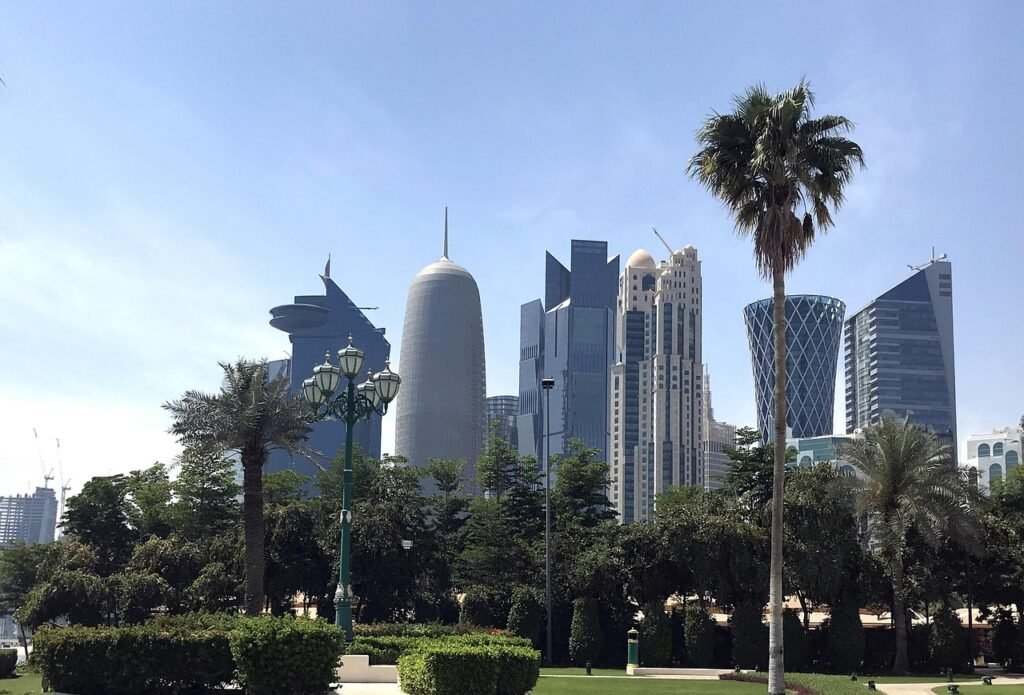
Part 2: Arabic in the Middle East
The Middle East is often considered the heart of the Arab world. It is where the Arabic language first emerged, where Islam was born, and where many of the most influential centers of Arabic culture and scholarship are located. The countries in this region share deep ties through language, faith, and history, yet each nation has its own dialects, traditions, and ways of using Arabic in daily life.
Saudi Arabia
Saudi Arabia is central to the Arabic-speaking world for historical and religious reasons. The Quran was revealed in Arabic in the Arabian Peninsula, and Mecca and Medina, Islam’s two holiest cities, are located here. This gives the Arabic of Saudi Arabia a special status in the eyes of Muslims around the world.
The official language is Modern Standard Arabic, but several dialects are spoken, including Najdi Arabic, Hejazi Arabic, and Gulf Arabic. These reflect the geographic and cultural diversity of the country. For example, the Arabic spoken in Jeddah differs from that of Riyadh or the eastern provinces.
Arabic in Saudi Arabia is not just a communication tool. It is tied to faith, history, and national pride. For learners, studying Arabic with a focus on the Saudi dialects offers insight into the language in its historical homeland.
United Arab Emirates
The United Arab Emirates (UAE) is a modern hub that blends tradition with global influence. Arabic is the official language, and Emirati Arabic is the local dialect. However, due to the large expatriate population, English is also widely used.
Despite this, Arabic holds a central role in national identity. Schools teach Modern Standard Arabic, and the government emphasizes the importance of preserving the language. Emirati Arabic reflects influences from trade across the Gulf, with loanwords from Persian, Urdu, and English, but its foundation is firmly Arabic.
For learners, the UAE highlights the balance between Arabic tradition and global modernity. It shows how the language continues to adapt without losing its cultural importance.
Qatar
Qatar, though small in size, is influential in the region. Arabic is the official language, and Qatari Arabic is widely spoken. Like the UAE, Qatar has a large international community, so English is present in business and education. Still, Arabic remains essential in government, media, and culture.
Qatar has invested heavily in promoting the Arabic language. Schools emphasize Arabic education, and cultural initiatives aim to preserve Arabic literature and poetry. This reflects the country’s recognition of Arabic as the foundation of its national identity.
Kuwait
Kuwait is another Gulf country where Arabic dominates daily life. Kuwaiti Arabic is the local dialect, distinct yet closely related to other Gulf dialects. Modern Standard Arabic is used in formal settings such as education, religion, and government.
Kuwait has a strong tradition of Arabic literature, theatre, and poetry. Many cultural works produced here have influenced the wider Arab world. For a learner, studying Kuwaiti Arabic provides access to a dialect that is rich in expression while still closely tied to the standard language.
Oman
Oman offers a unique example of how Arabic blends with local traditions. Omani Arabic is spoken across the country, but there are also regions where Baluchi, Swahili, and other languages appear due to Oman’s long history of trade and maritime connections.
Modern Standard Arabic is the official language and is central to education and administration. However, Omani Arabic reflects the country’s diverse history, with influences from East Africa, Persia, and South Asia.
For learners, Oman shows how Arabic adapts to local and global influences while maintaining its role as the unifying language of society.
Yemen
Yemen is one of the oldest centers of Arab culture and history. Arabic in Yemen has deep roots, and the local dialects are some of the most conservative forms of the language, meaning they preserve features lost in other regions. Yemeni Arabic varies from region to region, with northern and southern varieties showing noticeable differences.
Despite political and economic challenges, Arabic remains the strong foundation of Yemeni society. Poetry, storytelling, and oral traditions continue to thrive, keeping the richness of Arabic alive. For learners, Yemen offers insight into some of the oldest traditions of the Arabic language.
Iraq
Iraq has a long history as a center of Arabic culture, science, and literature. The Abbasid Caliphate, which had its capital in Baghdad, made Arabic the global language of science, philosophy, and medicine for centuries. This legacy still influences how Arabic is valued in Iraq today.
Modern Standard Arabic is the official language, but Iraqi Arabic, also known as Mesopotamian Arabic, is widely spoken. Kurdish is also an official language in the northern regions. Iraqi Arabic itself has several varieties depending on the region.
For learners, Iraq shows how Arabic carries centuries of intellectual and cultural heritage. Its dialect is widely understood across the Arab world due to Iraq’s influence in literature, music, and media.
Jordan
Jordan is a country where Arabic unites people from diverse backgrounds. Modern Standard Arabic is used in schools and official settings, while Jordanian Arabic is spoken in daily life. Jordanian Arabic is considered part of the Levantine dialect group, making it relatively easy to understand for learners who have studied Syrian or Palestinian Arabic.
Jordan has a strong tradition of Arabic poetry and literature, and Arabic plays a central role in national identity. For learners, Jordan offers a welcoming environment to practice Arabic, as the dialect is widely understood across the Levant and beyond.
Lebanon
Lebanon is famous for its cultural contributions in Arabic literature, music, and media. Arabic is the official language, and Lebanese Arabic is the main dialect spoken. Many Lebanese people also speak French or English, but Arabic remains at the core of daily life and national culture.
Lebanese Arabic is part of the Levantine dialect group. It is known for its expressiveness and has been spread widely through Lebanese music, television, and theatre. For learners, Lebanese Arabic is attractive because of its popularity in media and its connection to cultural creativity.
Syria
Syria has one of the richest traditions of Arabic culture. Damascus, one of the oldest continuously inhabited cities in the world, has been a center of Arabic scholarship and literature for centuries. Modern Standard Arabic is the official language, and Syrian Arabic, another form of Levantine Arabic, is the everyday dialect.
Syrian Arabic is widely understood across the Arab world, thanks in part to the popularity of Syrian drama and television. For learners, it is considered one of the most approachable dialects, with clear pronunciation and grammar compared to some other varieties.
Palestine
Arabic is central to Palestinian identity. Palestinian Arabic belongs to the Levantine group and shares many similarities with Jordanian and Syrian dialects. Modern Standard Arabic is used in education, government, and media, but the local dialect dominates daily life.
Palestinian literature, poetry, and storytelling play a key role in preserving Arabic heritage. For learners, studying Palestinian Arabic offers not only linguistic knowledge but also cultural insight into a society where language is deeply tied to history and identity.
Reflection
The Middle East highlights the power of Arabic as both a historical and modern language. From the Gulf to the Levant, Arabic unites people across borders, even as dialects vary. It is the language of faith, culture, and daily life, and it continues to evolve in response to global changes.
For learners, the Middle East provides opportunities to experience Arabic in its heartland. Whether in the holy cities of Saudi Arabia, the cultural centers of Egypt and Lebanon, or the historic streets of Damascus and Baghdad, Arabic is alive in every aspect of life.
Part 3: Arabic in the Horn of Africa and Beyond
Arabic is not confined to North Africa and the Middle East. It also plays a strong role in the Horn of Africa and in several countries on the edges of the Arab world. In these regions, Arabic often coexists with other languages, yet it remains central to national identity, culture, and religion.
Sudan
Sudan is the largest Arabic-speaking country in Africa. Arabic is the official language and the dominant means of communication across the country. The local dialect, Sudanese Arabic, is distinct but shares similarities with both Egyptian and Gulf Arabic. It has its own rhythm, pronunciation, and vocabulary, shaped by Sudan’s diverse ethnic and cultural makeup.
Sudan’s connection to Arabic is deep. It has been a crossroads of trade and religion for centuries, linking the Middle East with sub-Saharan Africa. Arabic serves as a unifying language among the many ethnic groups within Sudan, providing a common ground in a country of diverse traditions.
For learners, Sudanese Arabic is an example of how the language adapts to local cultures while still remaining clearly understood across the Arab world. Sudanese music, poetry, and storytelling give life to the dialect, making it a vibrant part of Arabic heritage.
Mauritania
Mauritania, located on the western edge of the Sahara, is officially an Arab country where Arabic is the primary language. Modern Standard Arabic is used in schools, administration, and media, while Hassaniya Arabic is the dialect spoken daily.
Hassaniya Arabic has its own unique features, influenced by Berber languages and African languages. Yet, it remains close enough to Classical Arabic that learners often find it fascinating to study. Mauritania is also known for its Islamic scholarship, with many traditional schools (mahadras) that preserve Arabic learning and Quranic studies.
Arabic in Mauritania is more than a language of communication. It is a symbol of cultural identity, tying the country to both North Africa and the wider Arab world. For learners, Mauritania highlights the deep spiritual and scholarly traditions of Arabic.
Somalia
Somalia is often associated with Somali as its national language, but Arabic also holds official status. Arabic’s role in Somalia is tied to religion, as the majority of the population is Muslim, and the Quran is central to education and daily life. Arabic is taught in schools, used in mosques, and present in government functions.
Somali and Arabic coexist in Somalia’s society. While Somali is the everyday spoken language, Arabic provides connection to faith, education, and the broader Arab community. For learners, Somalia shows how Arabic can serve as a second national language, shaping culture even when another language dominates daily conversation.
Djibouti
Djibouti is a small but strategically important country at the crossroads of Africa and the Middle East. Arabic is one of its two official languages, alongside French. In daily life, Somali and Afar are also widely spoken.
Despite this linguistic diversity, Arabic remains central to Djibouti’s identity as part of the Arab world. It is used in schools, government, and media. Religious life also strengthens the role of Arabic, as the language of the Quran and Islamic scholarship.
For learners, Djibouti is an example of how Arabic thrives in multilingual societies, providing unity and identity while coexisting with other local and colonial languages.
Comoros
The Comoros Islands, located in the Indian Ocean between Africa and Madagascar, also recognize Arabic as one of their official languages, along with French and Comorian (Shikomoro). Arabic’s role is closely tied to religion and education. Quranic schools and religious institutions teach in Arabic, and the language carries strong cultural significance.
While Comorian is the most commonly spoken language in daily life, Arabic connects Comoros to the wider Arab world and Islamic heritage. For learners, the Comoros offer insight into how Arabic spreads beyond the core Arab lands, reaching distant islands while still playing a vital cultural role.
Beyond the Arab World
Arabic also has a presence in countries where it is not the main language but still holds official or cultural importance. Examples include:
- Chad: Arabic is one of two official languages, alongside French. Chadian Arabic, a simplified form, is widely used as a lingua franca among diverse ethnic groups.
- Eritrea: Arabic is recognized as a working language, especially in education and media, alongside Tigrinya.
- Israel: Arabic is an official language, spoken widely by Palestinian citizens and used in government and media, though Hebrew dominates.
- Mali, Niger, Senegal: Arabic is not an official language, but it plays a strong role in religious life and education through Islamic schools and Quranic study.
These examples show how Arabic’s influence extends beyond its core countries. It demonstrates the language’s role not only as a native tongue but also as a cultural and religious bridge.
Reflection
The Horn of Africa and surrounding regions highlight the diversity of Arabic’s role in society. In some countries, like Sudan and Mauritania, it is the main spoken language. In others, like Somalia, Djibouti, and Comoros, it coexists with other languages but remains central to religion and education. Even in countries where Arabic is not the dominant language, it often carries spiritual and cultural weight.
For learners, exploring Arabic in these regions offers a broader perspective. It shows how the language adapts in multilingual contexts and how it continues to unite communities across geography, history, and faith.
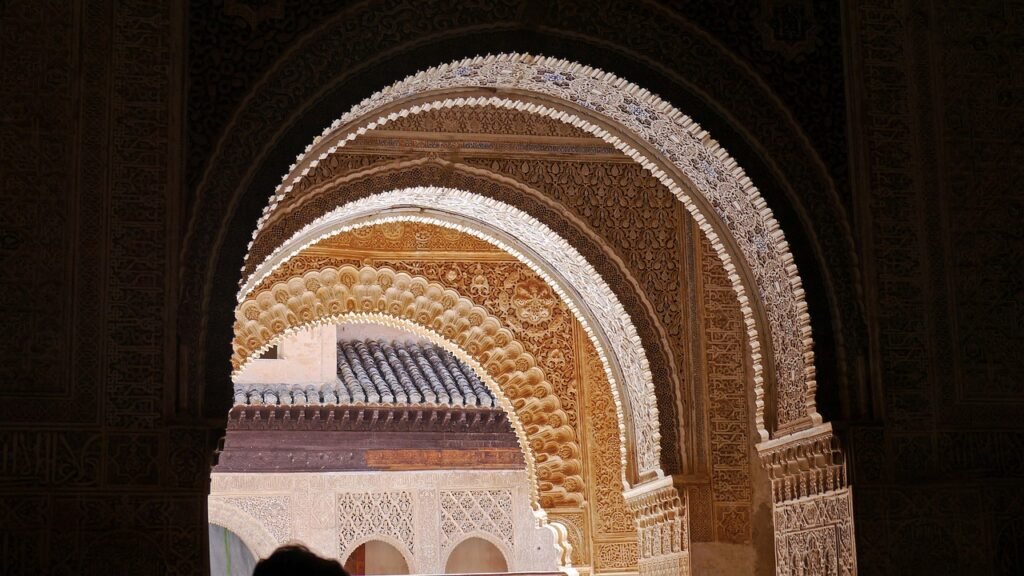
Final Part
Arabic is more than a language of communication. It is a bridge across continents, cultures, and generations. From the Atlantic shores of Morocco to the deserts of the Arabian Peninsula, from the Nile Valley in Egypt and Sudan to the islands of Comoros, Arabic connects over 20 countries and more than 400 million people. It is also the language of the Quran, giving it deep significance to over a billion Muslims worldwide.
The journey through the Arab world shows both unity and diversity. Modern Standard Arabic provides a shared foundation, while local dialects add flavor and identity to each region. Egyptian Arabic carries the voice of cinema and music. Moroccan Darija reflects centuries of trade with Europe and Africa. Levantine Arabic shapes poetry and drama. Gulf Arabic carries the history of the Arabian Peninsula. Sudanese and Hassaniya Arabic preserve old features of the language. Each form is Arabic, yet each tells a different story.
For learners, this variety may seem like a challenge, but it is also a strength. By mastering Modern Standard Arabic, you gain access to media, literature, and formal communication across the Arab world. By learning a dialect, you gain the ability to connect personally with people in everyday conversation. The key is to balance both.
Practical Advice for Learners
- Start with Modern Standard Arabic
Learn the basics of grammar, vocabulary, and pronunciation. This gives you a solid foundation for reading, writing, and understanding news, books, and academic texts. - Choose a dialect to focus on
If you want to travel, work, or live in an Arabic-speaking country, learn the local dialect. Egyptian Arabic is widely understood due to media. Levantine Arabic is flexible and useful across Jordan, Lebanon, Syria, and Palestine. Gulf Arabic connects you with the Arabian Peninsula. - Immerse yourself in culture
Watch films, listen to music, follow Arabic news, and read simple stories. Language grows through culture. Exposure will improve your listening and speaking skills faster than memorizing lists. - Practice daily
Even 20 minutes a day of focused learning makes a difference. Write short sentences, record yourself speaking, or review vocabulary. Consistency builds fluency. - Use Arabic with people
Language is about communication. Find language partners online, join Arabic-speaking communities, or practice with native speakers. Making mistakes is part of the learning process.
Why Arabic Matters Today
Arabic is not only a heritage language but also a modern tool for opportunity. The Arab world is young, dynamic, and influential in global affairs. Knowledge of Arabic opens doors in education, business, diplomacy, media, and cultural exchange. It helps you understand societies from within, rather than only through translation.
Arabic also gives access to one of the richest literatures in the world. From pre-Islamic poetry to modern novels, Arabic writing reflects human experience in diverse and powerful ways. For anyone interested in culture, history, or religion, Arabic is a key to knowledge that cannot be fully appreciated in translation.
About Ramdani Arabic Academy
Ramdani Arabic Academy was created to make Arabic learning accessible to learners everywhere. We believe Arabic is not just a subject to study but a living experience. Our courses, articles, and lessons focus on helping learners move from theory to practice, from memorization to communication.
We offer structured programs in both Modern Standard Arabic and dialects. We also provide cultural content—articles about history, traditions, and daily life in Arabic-speaking countries. Our goal is to help you not only learn the language but also understand the people who speak it.
Whether you are a beginner taking your first steps or an advanced learner polishing your skills, the academy is designed to support your journey.
About the Author
My name is Ramdani Mohamed, founder of Ramdani Arabic Academy. I created the academy to share my passion for the Arabic language and to support learners around the world. I have seen how Arabic changes lives—helping people connect with their faith, discover new cultures, and build careers in international fields.
Through teaching and writing, my goal is to make Arabic accessible, clear, and engaging. I believe anyone can learn Arabic with the right guidance and consistency. My message to every learner is simple: take the first step, stay consistent, and enjoy the process.
Final Words
Arabic is spoken in over 20 countries and connects millions of people. It is the language of history, culture, and identity. By learning Arabic, you open a door to understanding a vast and diverse part of the world.
The countries we explored—whether in North Africa, the Middle East, or the Horn of Africa—show how Arabic unites people while also reflecting local traditions. For learners, this means that studying Arabic is never just about memorizing words. It is about connecting with people, exploring cultures, and engaging with a living language that continues to grow and evolve.
Your journey with Arabic can begin today. Start small, stay consistent, and seek guidance. At Ramdani Arabic Academy, we are here to help you at every stage of the process. Arabic is not just a subject. It is a path to knowledge, understanding, and connection.
